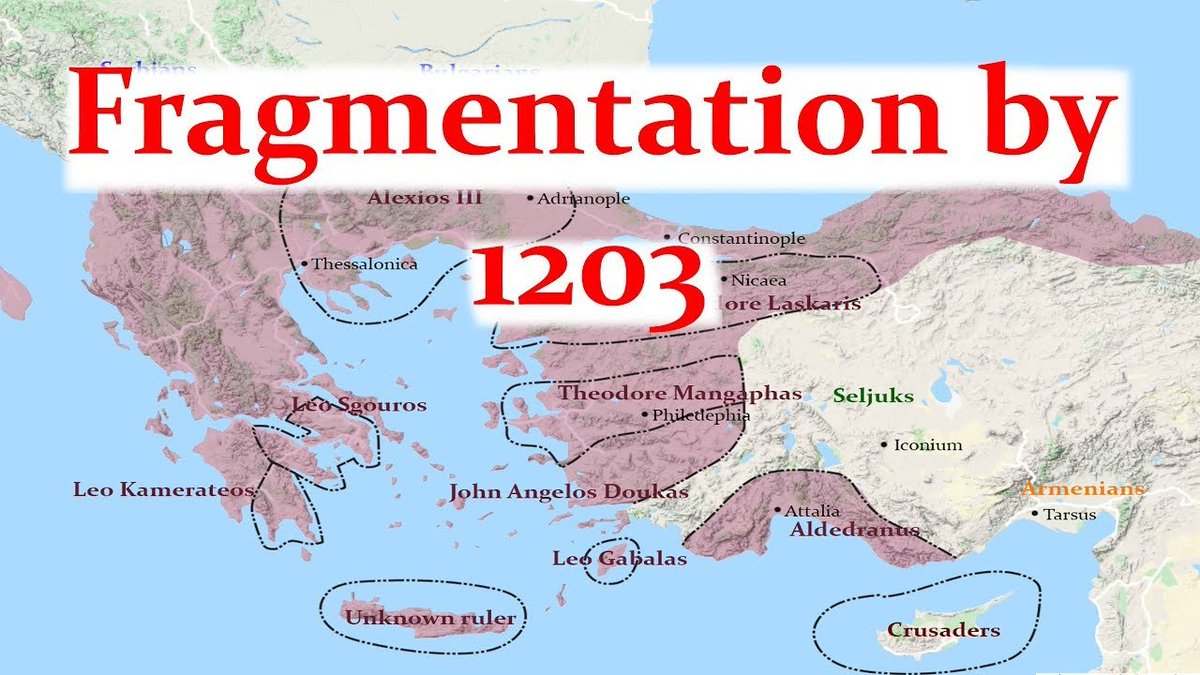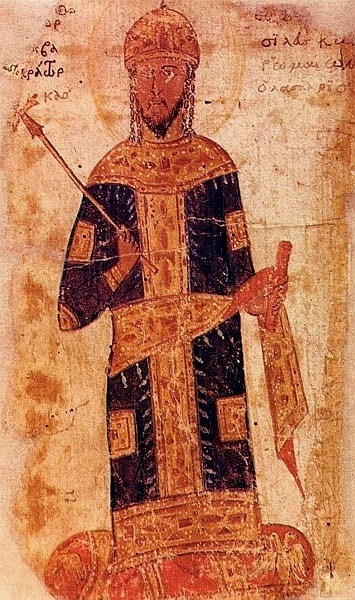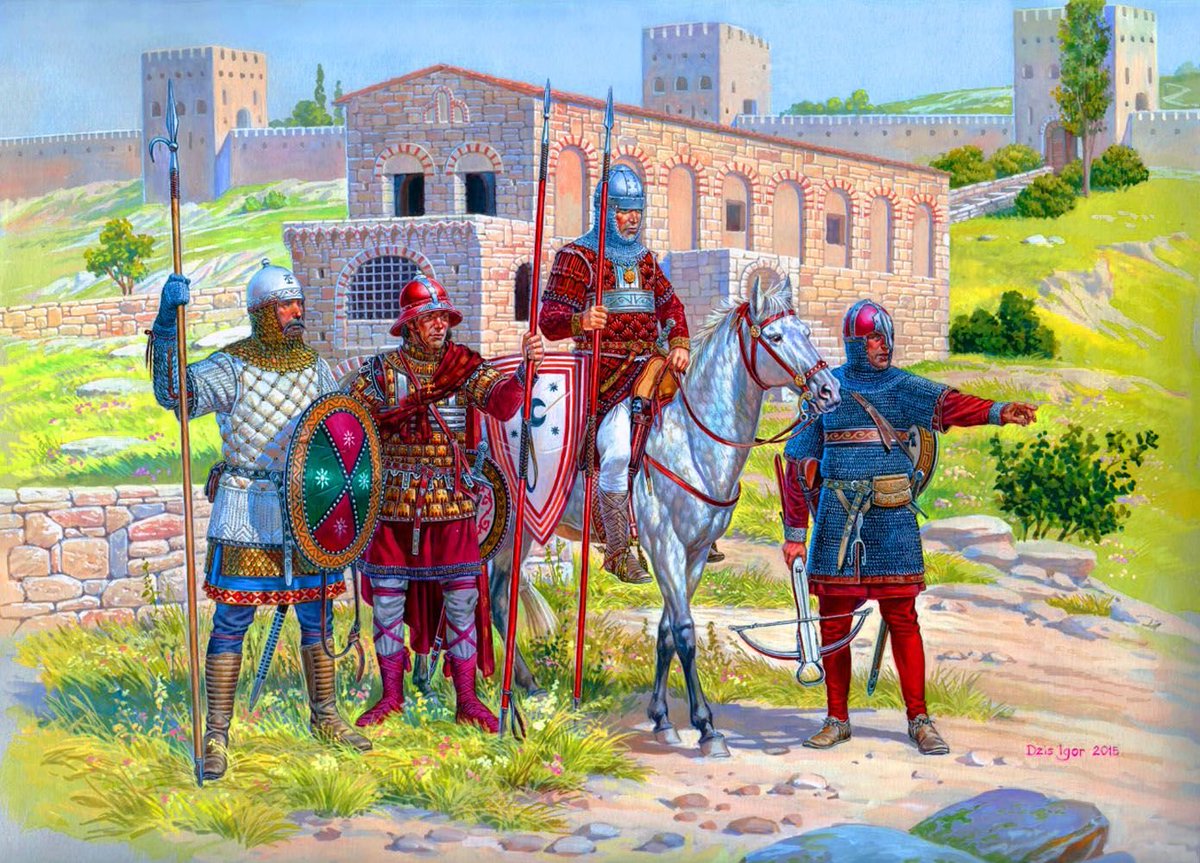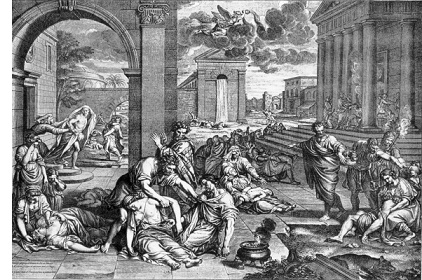Thread🧵on Byzantium's "Red Funeral"
Although most people know about the Red Wedding from the Game of Thrones Saga, few know an equally violent episode from Byzantium.
Though this episode didn't revolve around a wedding but a funeral.
Hop-in for a travel back in time!
(1/20)
Although most people know about the Red Wedding from the Game of Thrones Saga, few know an equally violent episode from Byzantium.
Though this episode didn't revolve around a wedding but a funeral.
Hop-in for a travel back in time!
(1/20)

The so-called "Red Funeral" occurred in 1258 inside a monastery (!) in the Empire of Nicaea and involved the future usurper-emperor Michael VIII Palaiologos and the regent Georgios Mouzalon.
But how did this occur and why?
Our story begins in the late Byzantine Empire.
(2/20)

But how did this occur and why?
Our story begins in the late Byzantine Empire.
(2/20)


Georgios Mouzalon was a member of a minor noble house of Asia Minor.
The House of Mouzalon produced a number of high-level dignitaries in the 11th and 12th centuries - for example, Nikolaos Mouzalon, the Archbishop of Cyprus and, later, Ecumenical Patriarch.
(3/13)
The House of Mouzalon produced a number of high-level dignitaries in the 11th and 12th centuries - for example, Nikolaos Mouzalon, the Archbishop of Cyprus and, later, Ecumenical Patriarch.
(3/13)

However, the house truly thrived in the 13th century under the patronage of Emperor Theodore II Laskaris in Nicaea.
Indeed, the emperor upgraded Georgios to the office of Megas Domestikos (commander-in-chief of the army) in 1254 - and raised his two brothers as well.
(4/20)

Indeed, the emperor upgraded Georgios to the office of Megas Domestikos (commander-in-chief of the army) in 1254 - and raised his two brothers as well.
(4/20)


Andronikos and Theodoros Mouzalon were appointed as protovestiarios (grand chamberlain) and protokynegos (grand huntsman) respectively.
The emperor elevated this minor noble house as "novi homini" to curtail the power of the dynatoi (great land-owners) of Asia Minor.
(5/13)

The emperor elevated this minor noble house as "novi homini" to curtail the power of the dynatoi (great land-owners) of Asia Minor.
(5/13)


The history of the Byzantine Empire was riddled with the never-ending struggle between the centralized bureaucracy in Constantinople and the aristocracy (of land and military) in the provinces.
The emperor did not intend to commit the same errors as the Angeloi Dynasty.
(6/20)

The emperor did not intend to commit the same errors as the Angeloi Dynasty.
(6/20)


Needless to say, the other aristocrats were estranged or enraged by the meteoric rise of House Mouzalon as "novi homini".
However, they didn't dare oppose the emperor.
He was a capable leader who expanded the empire's frontiers and catered for the people and clergy.
(7/20)

However, they didn't dare oppose the emperor.
He was a capable leader who expanded the empire's frontiers and catered for the people and clergy.
(7/20)


However, an illness struck the emperor that eventually cost him his life in August 1258.
On his deathbed, the emperor named Georgios Mouzalon as regent to his infant son and heir, John VI Laskaris, and demanded that the Senate, the Patriarch and Army swear an oath.
(8/20)
On his deathbed, the emperor named Georgios Mouzalon as regent to his infant son and heir, John VI Laskaris, and demanded that the Senate, the Patriarch and Army swear an oath.
(8/20)

Georgios Mouzalon feared the anger of the traditional noble houses. However, the empire's dignitaries, led by Michael Palaiologos, comforted him that they would never violate their oath to the late emperor.
But that was a ruse so that the regent would lower his guard ...
(9/20)

But that was a ruse so that the regent would lower his guard ...
(9/20)


Leader of this cabal of aristocrats was none other than Michael Palaiologos.
A scion of House Palaiologos, he was equally able and ambitious.
He didn't even hesitate to betray the empire for its archenemy - the Seljuk Sultanate of Rum - after a court intrigue.
(10/20)

A scion of House Palaiologos, he was equally able and ambitious.
He didn't even hesitate to betray the empire for its archenemy - the Seljuk Sultanate of Rum - after a court intrigue.
(10/20)


Indeed, he served as the commander of the sultanate's christian mercenaries under Sultan Kayka'us II from 1256 to 1258.
However, he returned to Nicaea in early 1258 after an amnesty by Emperor Theodore himself.
He was even offered the post of megas konostaulos -
(11/20)
However, he returned to Nicaea in early 1258 after an amnesty by Emperor Theodore himself.
He was even offered the post of megas konostaulos -
(11/20)

or commander of the Latin mercenaries.
Nine days after the emperor's death, a requiem (τα εννιάμερα) was performed at the Monastery of Sosandra - the "mausoleum" of himself and his predecessor John III Vatatzes.
It was at this monastery that the "Red Funeral" unfolded.
(12/20)

Nine days after the emperor's death, a requiem (τα εννιάμερα) was performed at the Monastery of Sosandra - the "mausoleum" of himself and his predecessor John III Vatatzes.
It was at this monastery that the "Red Funeral" unfolded.
(12/20)


The entire court attended the requiem inside the catholicos (the monastery's church).
The regent wasn't accompanied by any soldiers since the megas konostavlos would provide the security with his mercenaries.
At one point during Mass, the mercenaries started to shout
(13/20)

The regent wasn't accompanied by any soldiers since the megas konostavlos would provide the security with his mercenaries.
At one point during Mass, the mercenaries started to shout
(13/20)


and demanded to see the young emperor.
Thus, John IV Laskaris obliged and exited the monastery.
When he raised his hand to quiet them, one of the latin mercenaries shouted "en avant" (forward) and the rest charged into the monastery.
It would soon get (very) ugly.
(14/20)

Thus, John IV Laskaris obliged and exited the monastery.
When he raised his hand to quiet them, one of the latin mercenaries shouted "en avant" (forward) and the rest charged into the monastery.
It would soon get (very) ugly.
(14/20)


They stormed the catholicos and, surprisingly enough, sought out only the Mouzalon brothers.
They initially mistook Theophylactos, the regent's secretary, as the regent and murdered him.
Realizing their mistake, they searched for the brothers in every nook and corner.
(15/20)
They initially mistook Theophylactos, the regent's secretary, as the regent and murdered him.
Realizing their mistake, they searched for the brothers in every nook and corner.
(15/20)

George tried to hide under the altar, Andronikos behind a door and Theodore in a corner by the emperor's tomb.
They were nonetheless discovered and violently discarded.
After these murders, the palaces of the three brothers were ransacked by the violent mob.
(16/20)
They were nonetheless discovered and violently discarded.
After these murders, the palaces of the three brothers were ransacked by the violent mob.
(16/20)

A purge of the late emperor's other "new men", the protostrator John Angelos and protovestiarites Karyanites, followed shortly after.
In the meantime, the noble houses named Michael Palaiologos as regent and megas doux (or admiral of the navy).
What a surprise, hah?!
(17/20)
In the meantime, the noble houses named Michael Palaiologos as regent and megas doux (or admiral of the navy).
What a surprise, hah?!
(17/20)

Michael punished the instigator of the lynching, the latin mercenary Charles, by ... naming him a confidant!
In early 1259, he was crowned co-emperor but all knew who the real power behind the throne was.
When in 1261 Michael recaptured Constantinople from the Latins,
(18/20)
In early 1259, he was crowned co-emperor but all knew who the real power behind the throne was.
When in 1261 Michael recaptured Constantinople from the Latins,
(18/20)

he unveiled, at long last, his true colours.
He imprisoned the young co-emperor and crowned himself sole "King of the Graeci" in Hagia Sophia.
He inaugurated the Palaiologi Dynasty which would rule, with its characteristic emblem, until the end of Byzantium in 1453.
(19/20)
He imprisoned the young co-emperor and crowned himself sole "King of the Graeci" in Hagia Sophia.
He inaugurated the Palaiologi Dynasty which would rule, with its characteristic emblem, until the end of Byzantium in 1453.
(19/20)

Yet, a significant part of the peasantry and clergy in Asia Minor opposed this usurpation.
Rallying around Patriarch Arsenios, they revolted (in vain).
The Turks would soon profit from this instability.
The rest ... is a story for another time!
(20/20)
#Byzantium #History
Rallying around Patriarch Arsenios, they revolted (in vain).
The Turks would soon profit from this instability.
The rest ... is a story for another time!
(20/20)
#Byzantium #History

cc @Varangian_Tagma @StilichoReads @ByzantineLegacy @byzantinemporia @SPBSUK @ByzantioExpl_p @Cognosco_Team @ArcGreek @ByzLevant
• • •
Missing some Tweet in this thread? You can try to
force a refresh

























